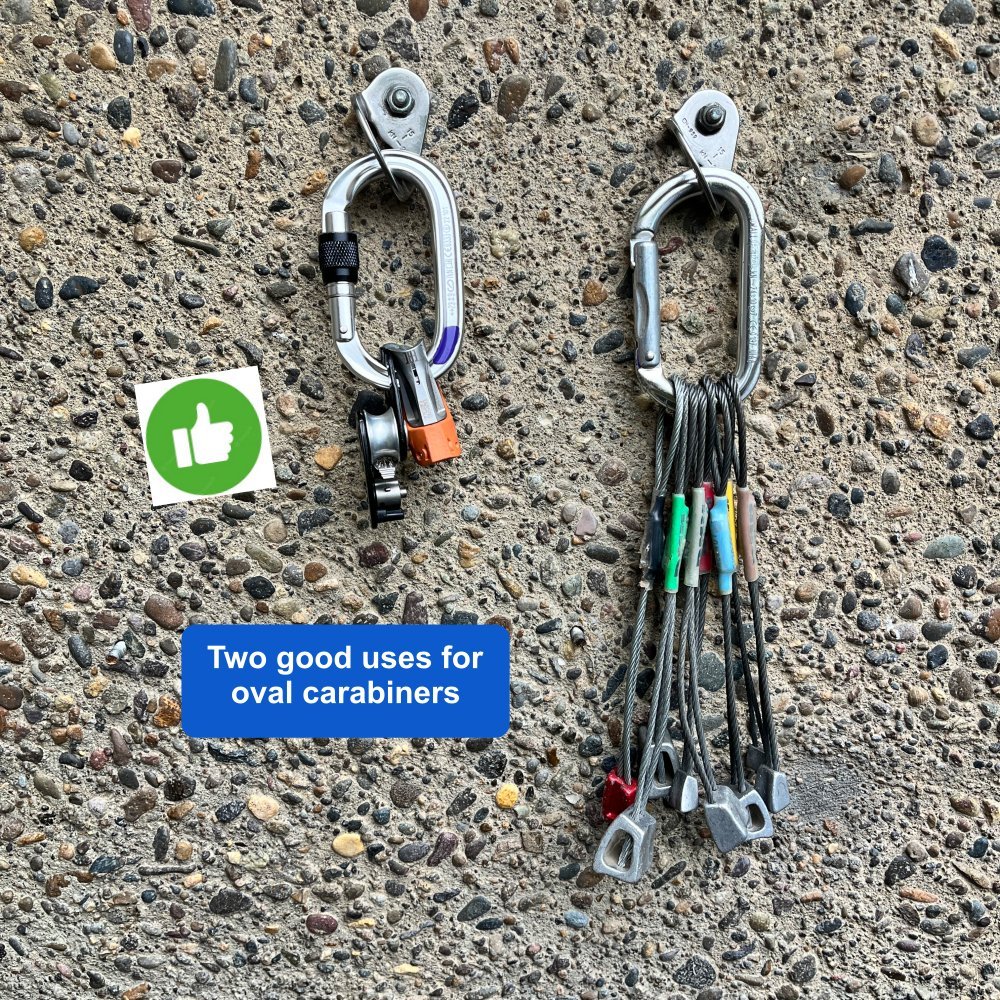What are oval carabiners good for?
Premium Members can read the entire article here:
image: from climbing historian and big wall ace John Middendorf’s outstanding website of historical climbing gear, https://www.bigwallgear.com/p/first-carabiners-for-climbing-summary
An oval carabiner was the first shape that was widely available to modern recreational climbers. However, carabiner design has changed a lot over the years, and now we have LOTS of different styles.
Does that mean the oval is obsolete? Nope! They’re great in certain applications.
Why are oval carabiners useful?
Behaves nicely with boxy devices like a Petzl Tibloc or Micro Traxion, or a fixed gate pulley
Perfect for racking stoppers. The stoppers rotate nicely around the oval end, and don't get jammed up like they can on a D shaped carabiner.
Works well with a Grigri and other types of assisted braking devices (ABDs), generally avoiding cross loading.
Tie a Munter hitch on them, and the hitch flips nicely back-and-forth. (That's right, you don't need a pear-shaped HMS carabiner for a Munter hitch.)
Rotates through loaded anchors, pitons, clove hitches, and other attachment points; doing this can be a problem with some D / asymmetric carabiners.
If ovals are three-way loaded, they retain almost full strength, (tested up to about a 60 degree angle), see video below.
Great for aid climbing, when you often have more than one carabiner clipped to another.
Works nicely as a top rope master point, using three snapgate ovals opposite and opposed. Functionally the same as two lockers, gives a nice smooth lower, and maybe puts the wear and tear on less expensive ovals instead of your more $$ locking carabiners. Here's how to set that up.
Reasonably lightweight; about 60 grams.
Fairly inexpensive, compared to other specialized lockers.




